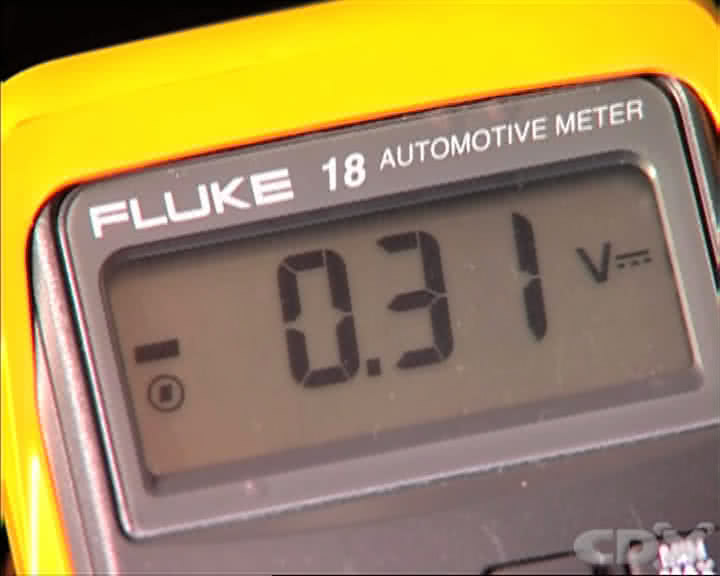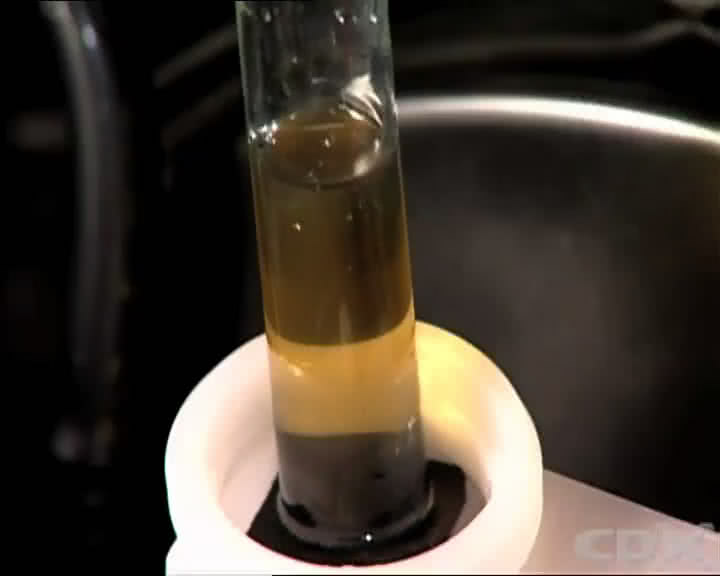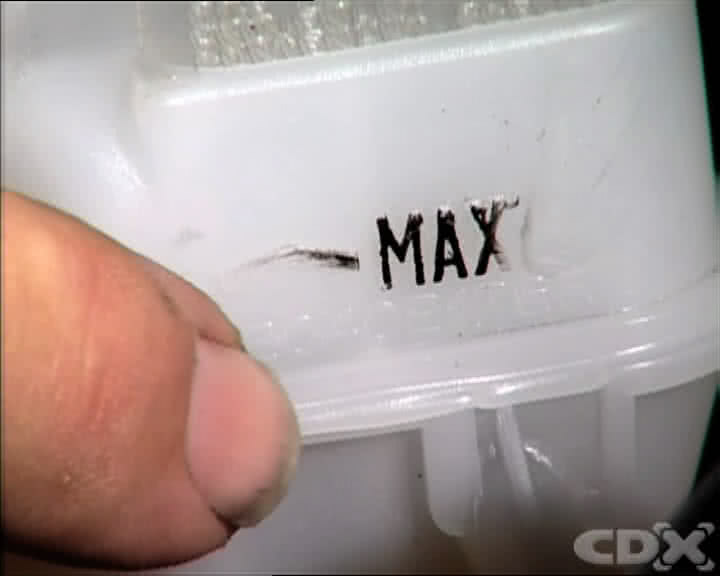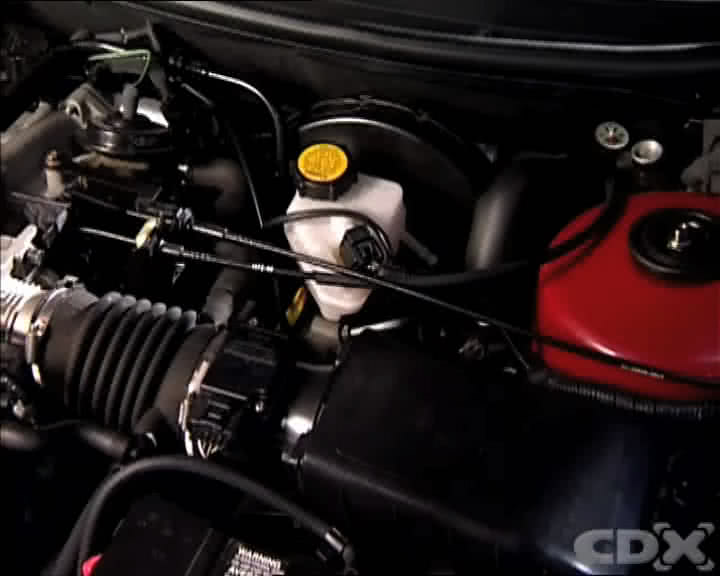How To Remove Brake Fluid
Bank check For Galvanic Reaction
Remove brake fluid reservoir cap, and set the DVOM or multi meter to read voltage on the lowest voltage range of the meter. Place one of the multi-meter probes into the restriction fluid and the other against the body of the principal cylinder. The voltage should exist no greater than 0.3 volts. If the voltage is higher this indicates a galvanic reaction which means at that place is an unacceptable level of moisture in the brake fluid.

Remove Backlog Brake Fluid
Use an old hydrometer or similar device to suck out the contaminated fluid from the master cylinder reservoir. Place the discarded brake fluid into a container that can be disposed of in an environmentally friendly mode.
Annotation: If fluid is spilt on paint piece of work, wash off immediately with cold water, practice non wipe.

Top Upward New Fluid
Top up the main cylinder reservoir with clean fluid until it reaches the total line. Close the brake fluid container every bit rapidly equally possible to prevent contamination and evaporation of fluid.
NOTE: If fluid is spilt on paint piece of work, launder off immediately with cold h2o, do not wipe.

Manually Bleed The Restriction Arrangement
Safely jack the vehicle up.
Open up the bleeder spiral that is farthest from the master cylinder and ask an banana to slowly push the brake pedal down.
With a clear bleeder hose inserted into a jar you tin can notice the air bubbles coming out. Close the bleeder screw off and have your assistant slowly release the pedal. Continue this process until at that place are no more bubbles coming out of the bleeder screw and the new restriction fluid is present. Shut off the bleeder spiral and tighten it to the manufacturer's specifications.
Repeat this process for each of the bleeder screws, moving closer to the principal cylinder.
Inspect & Test
Cheque carefully to ensure each of the bleeder screws have no leaks and the bleeder screws are closed correctly. A uncomplicated way of doing this is to ask the assistant in the vehicle to place their pes on the brake pedal as if they were applying the brakes whilst driving usually.
Now yous tin check all the bleed points and hose connections for leaks whilst the assistant is maintaining pressure on the organisation, and whatsoever fluid that could be leaking as effect of a loose joint in the components.
After y'all are satisfied all is right, lower the vehicle.
Carry out a final check for leaks around the master cylinder or bleeder screws. Supersede the master cylinder cover and bank check to encounter it is fully seated. Dilute any brake fluid which may have spilt with fresh, clean water. Now it is fourth dimension to double check the brake system pressure, fluid levels and visual signs of leaks.
The last test means taking the vehicle for a drive to ensure the integrity of the braking system.

How To Remove Brake Fluid,
Source: https://www.supercheapauto.com.au/blog/servicing-mechanical/replacing-brake-fluid-and-bleeding-brakes.html
Posted by: marlermuscom1994.blogspot.com


0 Response to "How To Remove Brake Fluid"
Post a Comment